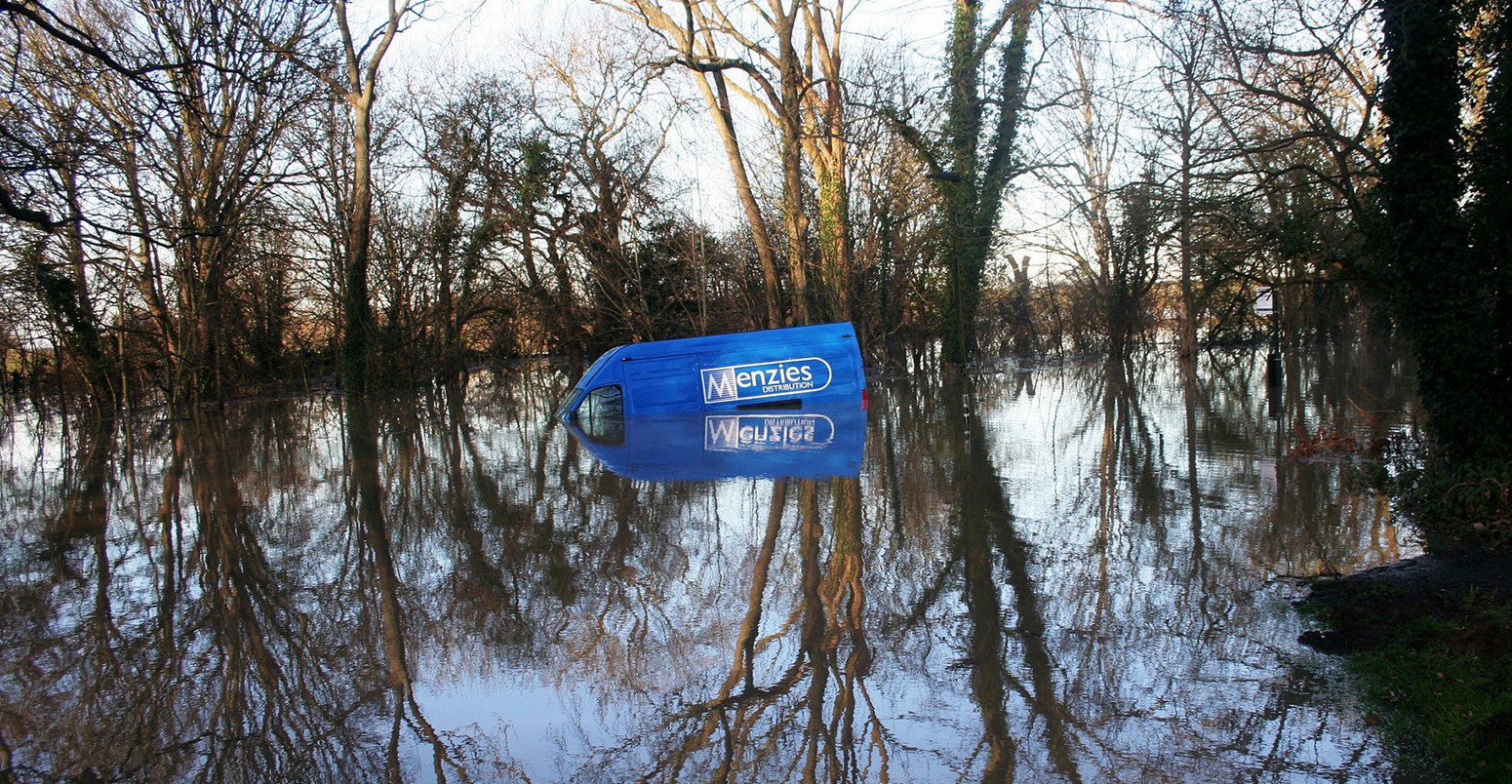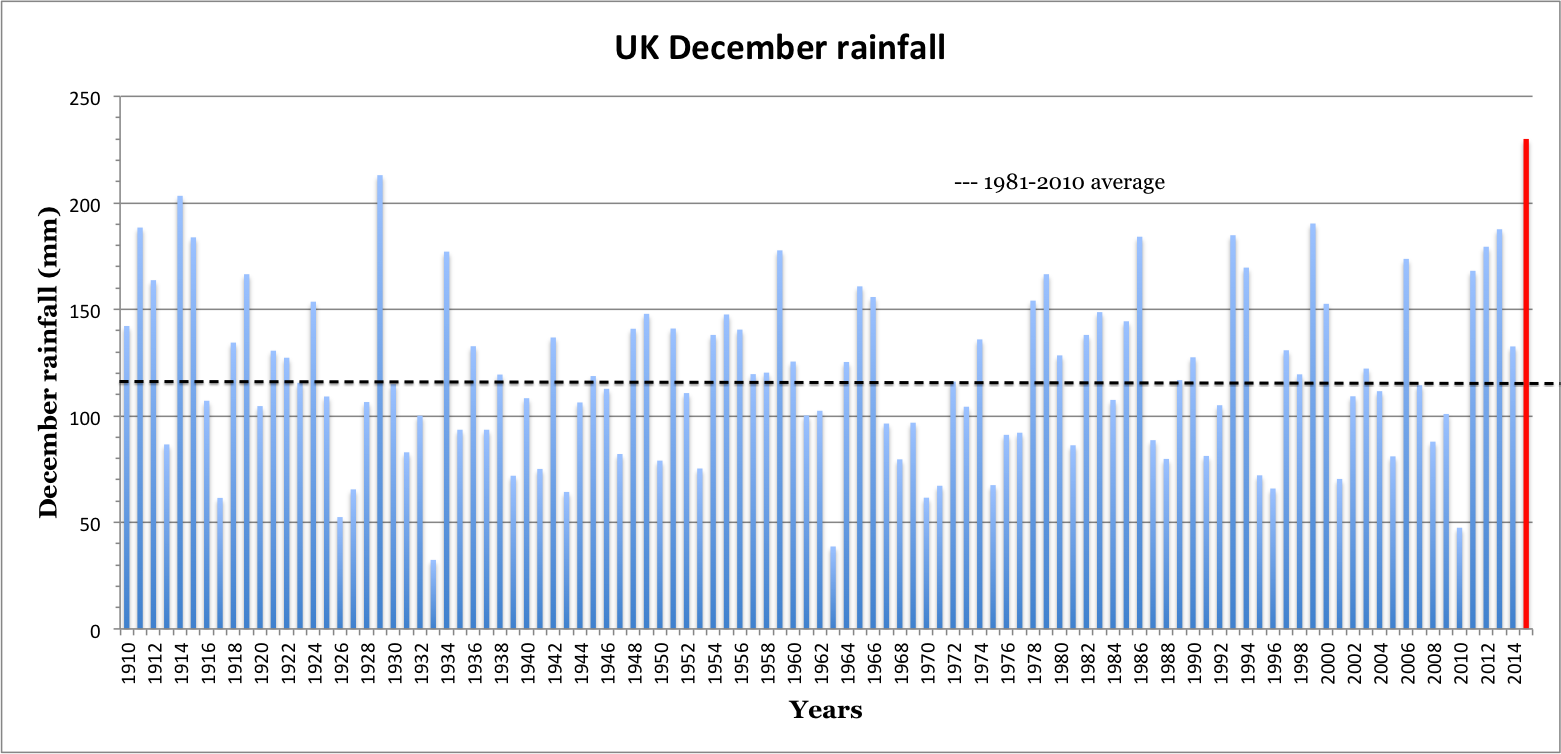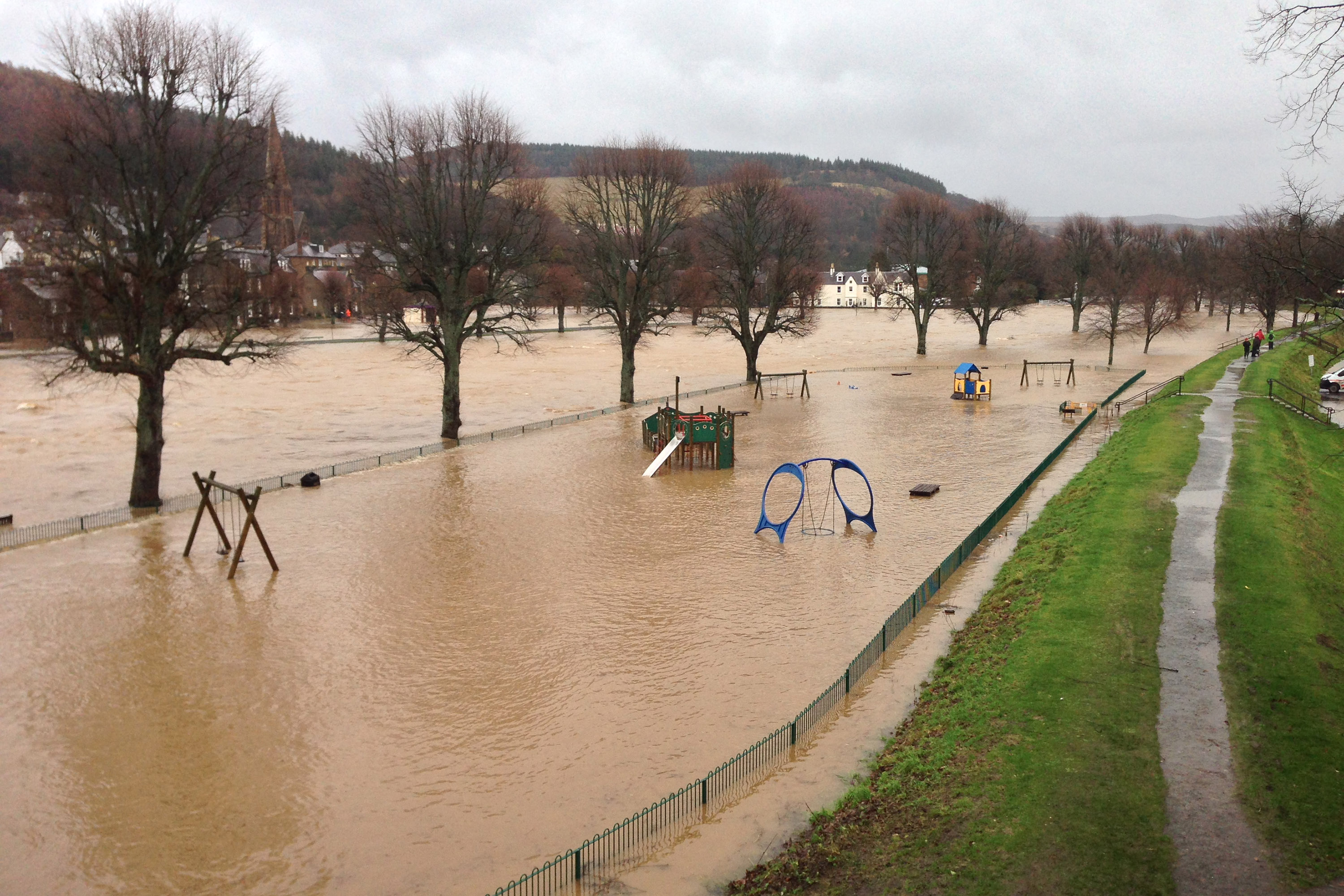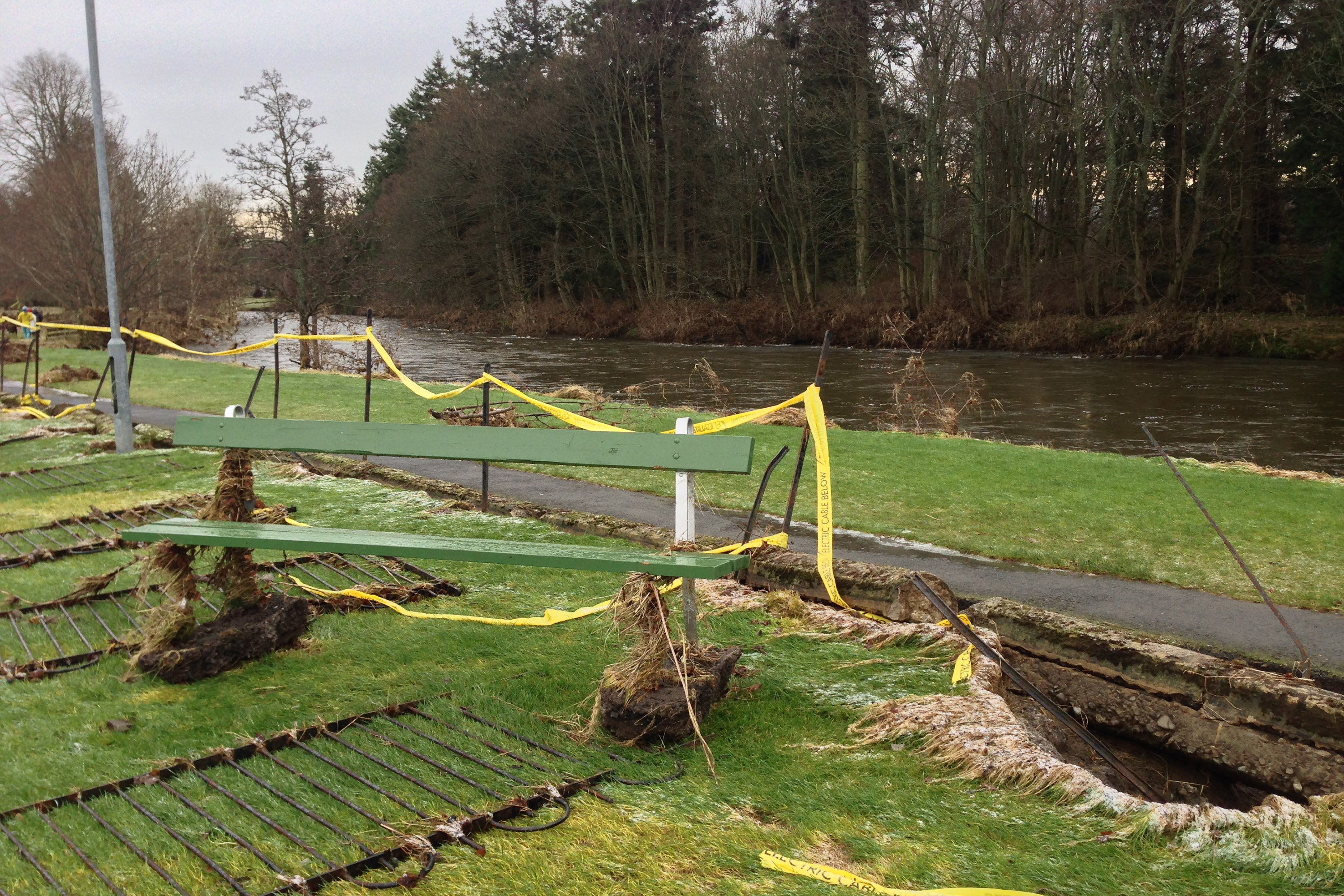
In-depth: Climate change confusion over government’s flooding review
Multiple Authors
09.09.16Multiple Authors
09.09.2016 | 4:23pmThe government has unveiled its long-awaited review of the risk the UK faces from heavy rain and flooding.
Prompted by severe flooding during the wettest December on record last year, the National Flood Resilience Review was set up in January 2016 to examine the risk over the next decade, as well as how the UK could be better prepared.
The report’s headline conclusion was that some parts of the UK should be prepared for rainfall 20-30% more intense than even the record-breaking events of last year. The extent to which this recognises climate change’s role in extreme rainfall has caused much confusion, however.
Media confusion
Carried out as a joint endeavour by the Cabinet Office, the Department for Environment, Food and Rural Affairs (Defra), the Environment Agency (EA), the Met Office, and the government’s chief scientist, yesterday’s review follows a call for evidence issued in February.
With the delivery of the review’s findings already delayed by several months, yesterday’s report garnered a fair bit of media attention – but with slightly different treatments of what the review says about climate change.
The Guardian implied the government’s expectation of more extreme rainfall comes from taking climate change into account. It says:

Total rainfall in mm for December from 1910-2015. Carbon Brief chart using Met Office data.
Similarly, Mary Creagh, chair of the Environmental Audit Committee, implied the 20-30% greater risk will materialise over time, though she doesn’t mention climate change explicitly.
She said:
Others interpreted the raised risk as Met Office scientists accounting for the possibility of bigger swings in natural variability. The BBC’s David Shukman reported:
Getting into the details of the report, it’s clear the warning of bouts of rain that are 20-30% heavier than we’ve seen recently isn’t a climate change prediction. Rather, it’s mainly down to what is possible right now from natural variability. (We’ll explain more about this below.)
But the lack of clarity is unfortunate, given the report’s stated intention to “reassure ourselves that we understand the scale of risk that the country is currently facing”. It’s also worth noting the review appointed a subgroup of the scientific advisory group, whose specific task was to “consider the challenge of communicating flood risk effectively.”
Flood Review has re-run flood models using Met Office extreme rainfall scenarios. Govt accepting #climate changing https://t.co/d722XLpH70
— Guy Shrubsole (@guyshrubsole) September 8, 2016
‘Black swans’
Taking a closer look at the report, the 20-30% uplift figure is based on new “scientifically valid and plausible” scenarios of extreme rainfall produced by the Met Office for the review.
In order to generate the new extreme rainfall scenarios, the Met Office used their new HadGEM3 climate model. This model has a “higher resolution than any used previously in climate prediction,” says the Met Office, which means it can represent weather patterns more realistically than its predecessors. Met Office scientists usually run the model for predicting how the UK’s weather could vary from the next season up to the next decade.
The scientists chopped the UK up into six regions and simulated a decade of rainfall patterns over and over again to create a “virtual” dataset of more than 11,000 months of rainfall data.
These simulations were based on the weather we’ve experienced between 1980 and 2014. But the model also allows the simulations to venture beyond the limits of just what weather we’ve had in the past, to include the sort of extremes we haven’t yet seen, but are still plausible – what Donald Rumsfeld might call “known unknowns”.
As the Met Office explains in a blog post accompanying yesterday’s review:
These extreme events are called “black swans” because they deviate from what is generally expected and are difficult to predict. But having thousands of simulations allows the scientists to get a handle on how often they might occur.
@RozPidcock They used climate models to simulate natural variability and look at possible extremes. This dominates on timescale of interest.
— Richard Betts (@richardabetts) September 8, 2016
The modelling results suggest that, for any particular year and region in the current climate, there’s a 10% chance of a rainfall event that breaks existing records for monthly rainfall. Prof Adam Scaife, head of long-range forecasting at the Met Office and part of the team working on the review, explains to Carbon Brief:
The Met Office looked at a plausible “worst-case” scenario for extreme monthly rainfall, which they define as an event with a 1% chance of happening in a given year.
Their results show that a 1% event in winter would likely be 15-35% wetter than current records, and for summer would be 25-50% wetter. Based on these results, and other factors – such as evidence from observations and the uncertainty in climate models – the scientists decided that an overall 20-30% uplift should be applied to current rainfall records for assessing flood risk. On why the scientists decided against being more specific, Scaife tells Carbon Brief:
Because these uplifts are based on the climate we’re experiencing now, they “include the climate change that we’ve accrued so far,” says Scaife.
In other words, the expectation for bouts of rainfall 20-30% heavier than today takes into account the contribution from human-caused climate change to date, but predominantly reflects what we can reasonably expect to see within the bounds of natural variability.
Clear signals
As well as looking at the current risk posed to the UK by flooding, the scientists considered whether climate change would further raise the risk in the next 10 years. If so, they would need to shift their expectations for heavy rainfall even further upwards. The report says:
While some might want to use this to suggest this shows climate change is not a factor in heightened flood risk, this is explicitly not what the review is saying.
Over a short 10-year period, the deciding factor in how extreme we can expect the UK’s rainfall to be is natural variability, says Prof Myles Allen, professor of geosystem science at the University of Oxford and a member of the scientific advisory group for the review.
Allen tells Carbon Brief:
Looking at periods longer than 10 years, however, the impact of climate change is clearly visible in how much rain can fall in a single day. On this point, the report says:
A number of recent “event attribution” studies have demonstrated the role of climate change in bouts of heavy rain. An analysis of the UK’s record-breaking wet December in 2015 found climate change increased the odds of the exceptionally high rainfall by 50-75%. A separate study found climate change boosted the odds of the UK’s 2013-14 wet winter by 40%.
It’s simple physics that warmer air holds more moisture. So, when conditions are right for it to rain, climate change means that it is likely to fall in heavier bursts. Scaife tells Carbon Brief:
Here is Scaife speaking soon after December’s record-breaking weather about how the record rains were linked global climate patterns.
Analysing how much rain falls over a month or a whole season is more difficult, however, and it may be some time before the climate change signal becomes clear, the report notes.
Flooding also depends on more than just rainfall. While rising sea levels are known to be increasing coastal flood risk, for example, there is limited evidence for any climate change-related increase in the number or severity of storms hitting the UK, the report adds.
‘Major upgrade’
In terms of what the UK can expect from climate change in the coming decades, a new set of climate projections for the UK that are due in 2018 – known as UKCP18 – will provide more detailed information. Current projections are derived from the last iteration produced in 2009 (UKCP09).
According to the Met Office, UKCP18 will provide a “major upgrade” to the range of UK climate projection tools that will have “more focus on how natural variations combine with the long-term climate trend to produce future extreme weather”.
So, while the nuances might have got lost in translation, yesterday’s report highlights how natural variability will ultimately dictate whether we see repeats of the scenes from last winter. However, climate change is edging up the flood risk over the long term. Scaife tells Carbon Brief:







